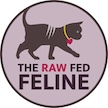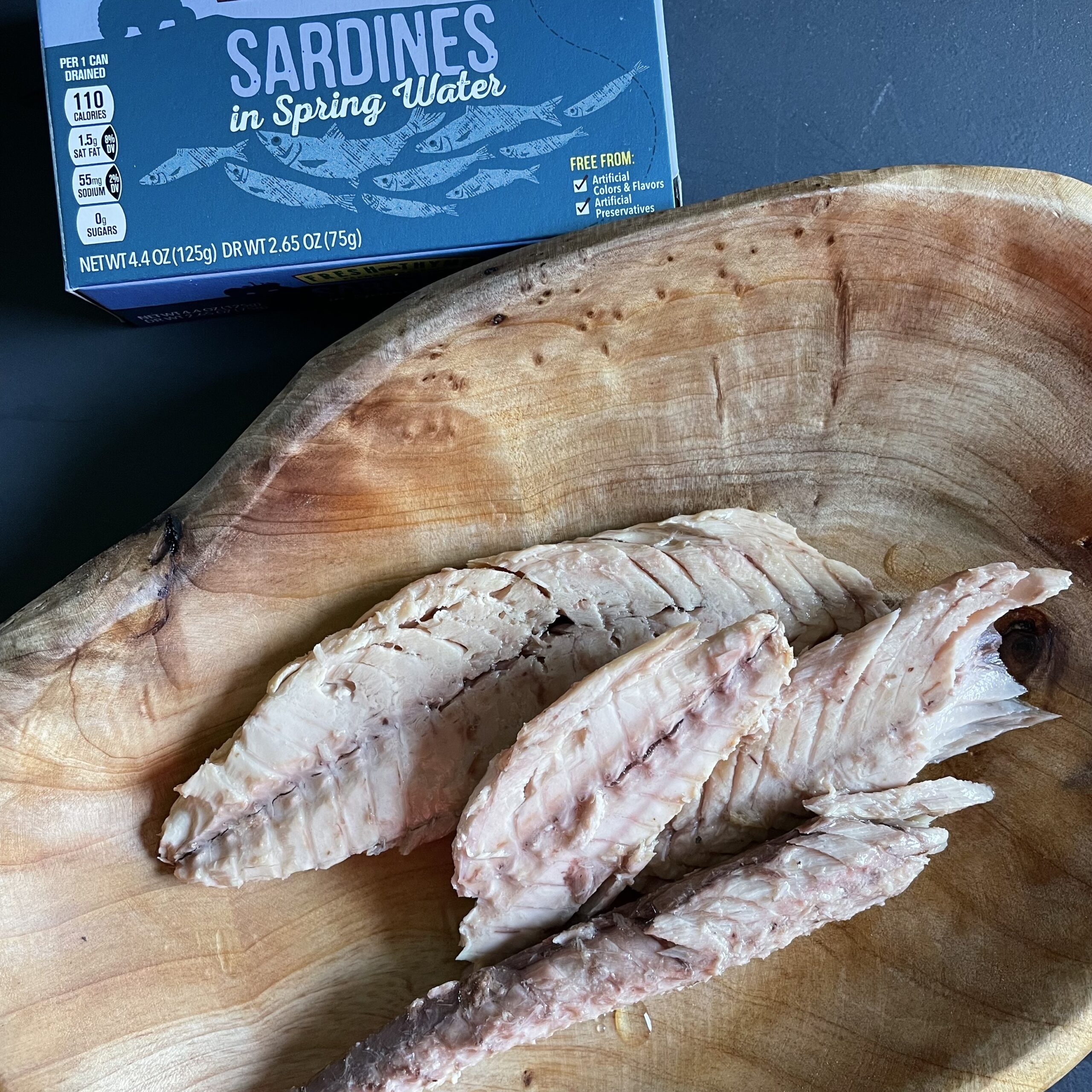Let’s continue making our way to the upper tiers of the PMR Food Pyramid for Felines. Last post I talked about liver and other secreting organs. Now let’s talk eggs, oily fish, and other whole food sources to help round out the PMR rotational diet.

Eggs
Eggs are nutritional marvels and should be included for their fabulous nutrient profile. They provide many important nutrients, including vitamin D, choline, amino acids, and some healthy fat, just to name a few. If you are able to source eggs from pasture raised chickens, even better. Chicken eggs, which are most commonly used, are included in the diet with a suggested amount of 1 egg per 1 pound of food.
There is often confusion about whether or not to feed eggs raw due to concerns about biotin and avidin. Egg whites contain avidin and egg yolks contain biotin. Biotin is an important B vitamin in the diet. Avidin interferes with biotin absorption. However, and this is the part that often gets missed, the yolk contains more than enough biotin for this to not be a concern. You can feed whole eggs or yolk raw in your cat’s diet.

Fish
Next up is small, oily fish. Feeding oily fish is a great way to add omega-3 fatty acids as well as vitamin D to the diet. Vitamin D is an essential fat soluble vitamin. Cats are unable to effectively make vitamin D through their skin, so it needs to come from the diet. Oily fish are a great way to provide this nutrient. Omega-3 fatty acids from fish include EPA and DHA, which are important for cell growth and repair, reducing inflammation, and supporting the immune system.
Sardines, mackerel, herring, smelt, anchovy, and salmon are all good options. I do not recommend feeding tuna since it is a longer lived fish. There are significant concerns with the levels of mercury and other toxins when it comes to tuna.
You can feed fish raw or cooked. If you feed fish raw, you must freeze it for a minimum of three weeks to kill potential parasites. If you use canned fish, you want to buy ones that are packed in fresh water with no added salt. Ocean fish is already naturally higher in sodium, so you don’t want extra added. Canned sardines and mackerel are two that I use most often for Hazel’s meal preps. They are inexpensive and easy to portion. You only need an ounce of fish per 16-20oz of food. A little fish goes a long way.
thiaminaise
There is an issue to be aware of with fish. The issue is with thiaminaise. Thiaminaise is an enzyme that interferes with thiamin (vitamin B1) absorption. Cats have a high need for thiamin in their diet. There are certain fish that contain thiaminaise and others that do not. It has long been suggested in raw feeding circles to store raw fish containing thiaminaise separate from the rest of the diet to prevent the thiaminaise from destroying the thiamin.
This article looked at the research and concluded that it is likely not as severe an issue as previously thought. She suggests that you would need to feed a lot of fish and overall not enough thiamin in the diet to really cause a problem; however, this article was looking at this issue in terms of dogs. Cats have almost a three times greater need for thiamin in the diet than dogs. With that in mind, I like to err on the side of caution and feed fish that is cooked (all canned fish has been cooked) or store raw fish separately from the rest of the food.
Other whole food additions
vitamin e
In the next tier are some other whole food additions and supplements that can help round out the diet. Since we just covered fish, let’s look at vitamin E. Vitamin E is a fat soluble vitamin that is an important antioxidant. When we feed fish, which provide omega fatty acids, we need to be sure to include enough vitamin E. These fatty acids are very sensitive to oxidation, which is why vitamin E is needed as an antioxidant to protect the fatty acids. This article has a great little calculator to determine how much vitamin E your cat needs based on weight. I personally like using vitamin E oil. I only need to add a drop of oil every 2-3 days for Hazel.

oysters
Oysters can be added to batches of food that do not contain any red meats and/or if your cat doesn’t eat a lot of red meat overall in the diet. Both oysters and red meats are nice sources of zinc. Generally speaking, feeding a diet that has at least 50% red meats is encouraged. But if your cat doesn’t consume enough red meat, then adding some canned oysters to the diet would be a good idea. An ounce of oysters per 20oz of food will provide enough zinc when not feeding red meats.
mussels and tripe
Blue and black mussels and/or tripe provide manganese. Manganese is thought to be found in the fur and feathers of prey animals as well as in organ meats. If you are not feeding whole prey in your cat’s rotation, then including steamed mussels is an easy way to provide manganese. You only need an ounce of mussels per 16-20oz of food.

“nooch”
Fortified nutritional yeast, the stuff that many vegans use to provide a cheesy or umami flavor, has many B vitamins and most cats love it. You can add a sprinkle to your cat’s meal to provide some extra B vitamins and as an enticement. One teaspoon per 16-20oz of food is enough.

kelp
Kelp provides iodine in the diet. Cats would typically get iodine from the thyroid gland of their prey. And if you feed whole prey regularly in your cat’s diet, I would not add any kelp. You want to be very careful when supplementing iodine. Too much iodine is linked to hyperthyroidism in cats. There is research indicating that the current NRC recommendations for iodine are far too high. Subsequently, a recommendation more in line with that research is 115 mcg per 20 oz of food.
Don’t forget to rotate
As always, when feeding a prey model raw rotational diet, rotation and variety are important. Rotating the eggs and kinds of fish you offer is highly encouraged and overall helps round out the diet.
Next post will be the tippy top of the pyramid. Stay tuned!


